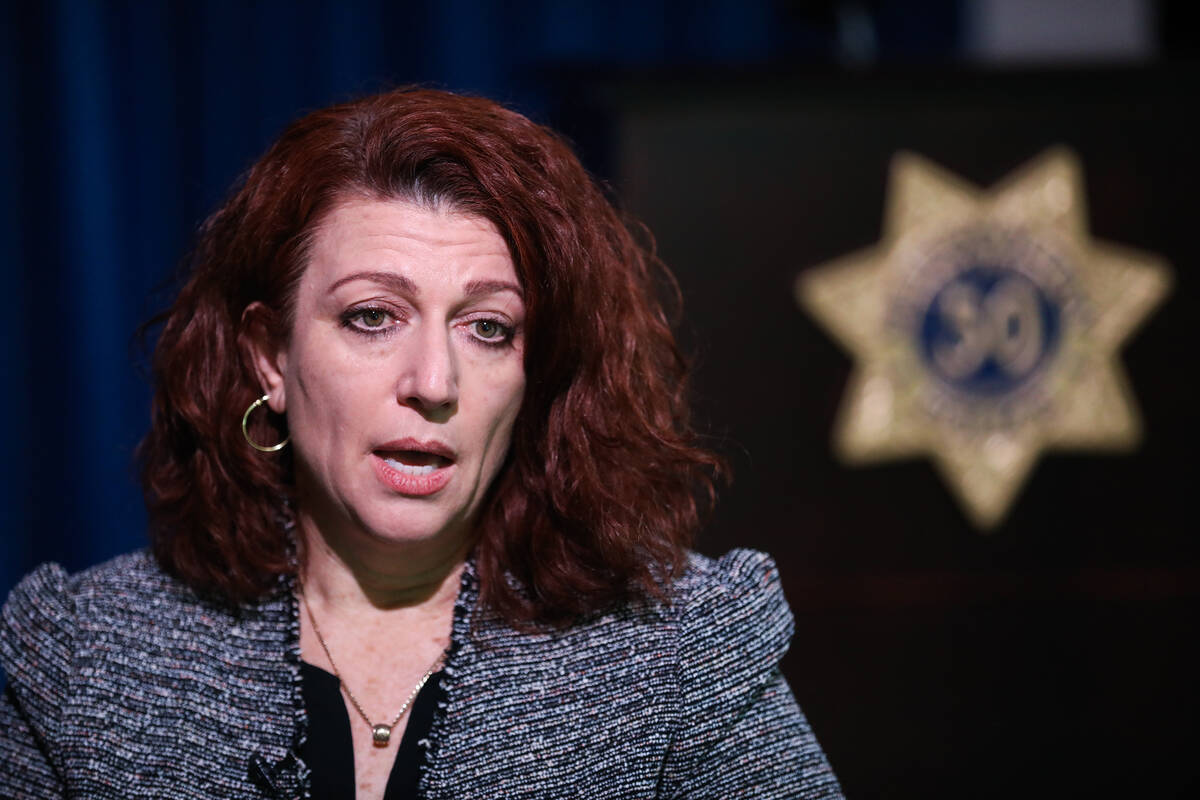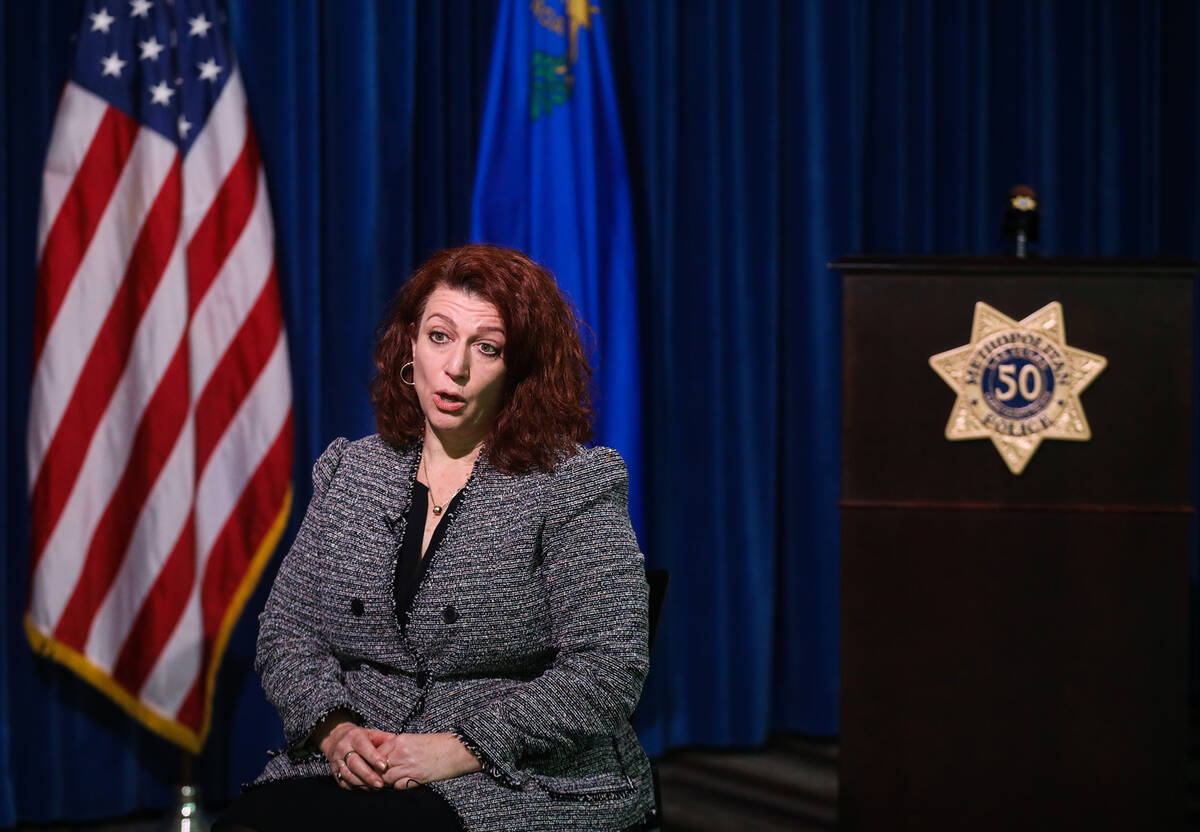Major case protocol: How police handle the biggest crimes in Las Vegas
The moment Metropolitan Police Department homicide Lt. Jason Johansson heard that several people had been stabbed on the Strip, he instituted what authorities call “major case protocol.”
Yoni Barrios was arrested within an hour of the Oct. 6 spree, which left two dead and six others injured.
“Had he not been in custody right away, we would have had teams dedicated to reviewing video surveillance, putting pieces together to identify the suspect and tracking the path of the suspect so we can contain additional evidence,” Johansson said.
Metro’s top brass can enact major case protocol for several reasons, based on department policy, including a series of sexual assaults, shootings or homicides. Violent robberies, high-end property crimes, terrorism and missing persons cases that appear suspicious all meet the criteria outlined in Metro’s policy.
“Any case garnering national media attention or where speed of suspect apprehension is necessary,” also meets Metro’s criteria, according to the policy.
Johansson said he usually calls in major case protocol for killings that “shock the conscience,” if the killing happened on the Strip or if the same person is suspected in multiple killings.
Calling in major case protocol brings together other departments of Metro and makes the case the priority for all departments involved.
For Johansson, that can mean calling in sexual assault, narcotics and gang units, Metro’s forensic lab, patrol officers, federal investigators and the fusion center.
Typically, after the protocol is enacted, an arrest is made or all leads are exhausted in less than a week.
The killing of Las Vegas Review-Journal investigative reporter Jeff German became major case protocol for Metro only hours after German was found stabbed to death on the side of his northwest Las Vegas home in early September.
Police held several news conferences, while detectives canvassed the neighborhood for video and the forensic lab evaluated DNA under German’s nails.
Former Clark County Public Administrator Robert Telles was in custody four days later in connection with the killing. He is awaiting trial.
Stabbing series
A month before the stabbing that terrorized the Strip, Metro investigated the stabbing of Jody DeVries, a homeless woman who was found dead near UNLV. Six days later, on Sept. 20, detectives were searching for evidence a half-mile away when Mary Susan Miller, another homeless woman, was stabbed to death near UNLV.
“Right away based on the details, that was a call where I said this sounds very eerily like the murder of Jody DeVries,” Johansson said.
After detectives confirmed his suspicions, Johansson enacted major case protocol and called in help from UNLV police and patrol officers who were more familiar with the nearby homeless communities. In briefings with officers, which occur at least every 12 hours during major case protocol, a sergeant suggested to Johansson that fusion watch officers should monitor cameras of the area in case the suspect returned.
Johansson said surveillance cameras proved to be vital when Christopher Martell, the suspect in DeVries’ and Miller’s killings, was seen on video and arrested, authorities said, while trying to stab two people in the area.
“It brought a sigh of relief to everyone that now he was in custody, and now we can just go through our investigative steps to make sure we’ve solved this case,” Johansson said.
Criminalistics Bureau Executive Director Kim Murga said her lab receives major case protocol requests after homicides, gang shootings, sexual assaults and drug cases.
“The managers know if we receive wind major case protocol is enacted, we notify lab managers and depending what we have, latent print, DNA or firearms evidence, we try to triage so we’re not overwhelming one section if there’s a multitude of evidence available,” Murga said.
Murga oversees the crime scene and evidence vault sections and the forensic lab. She said it can take only a few hours to process fingerprints left at a scene but a day or two to link DNA.
“We have 80 folks responding to crime scenes to preserve evidence, and they have one shot to obtain, preserve and collect anything that’s of value that may help shed light on who committed the crime,” she said.
Murga said the lab works with investigators to prioritize evidence, including DNA, shell casings and fingerprints, that is most likely to obtain the fastest and most successful solving of a case.
“We’re looking at the best evidence always,” she said. “Our goal is to always assist in the apprehension of a violent offender who threatens the safety of Southern Nevada.”
Contact Sabrina Schnur at sschnur@reviewjournal.com or 702-383-0278. Follow @sabrina_schnur on Twitter.




















